Driving down the road on my way to work at St. Vincent Mission the other day I spied a scarecrow and thought “Oh that’s what they mean”. I will explain in a minute.
My second year as Grow Appalachia Program Director here in Floyd County, KY was a real learning curve. One of my more memorable home visits was to Edna who farmed on the homeplace where she and her 12 siblings were raised. The day I visited she was lamenting the crows attacking her corn and beans. Apparently, the crows, seeing the young plant poke through the dirt, fly down, pull the plant from the ground and eat the seed, leaving the plant to die on top of the soil. Her grandson had put a scarecrow at the end of the field but she said it wasn’t doing much good and she would have to replant. She did that three times that year before getting the crop to grow past seedling stage.
So I knew then crows were the enemy. There are many ways to scare them off from pie plates, to owl statues to the recent bird scare tape. But of course the old standby is the scarecrow. Wondering how what I saw while driving down the road ever turned into the floppy limbed character we all know from the Wizard of Oz, I turned to Wikipedia.
The 1881 Household Cyclopedia of General Information gives the following advice:
Machinery of various kinds, such as wind-mills in miniature, horse rattles, etc., to be put in motion by the wind, are often employed to frighten crows; but with all of these they soon become familiar, when they cease to be of any use whatever. The most effectual method of banishing them from a field, as far as experience goes, is to combine with one or other of the scarecrows in vogue the frequent use of the musket. Nothing strikes such terror into these sagacious animals as the sight of a fowling-piece and the explosion of gun powder, which they have known so often to be fatal to their race. Such is their dread of a fowling-piece, that if one is placed upon a dyke or other eminence, it will for a long time prevent them from alighting on the adjacent grounds. Many persons now, however, believe that crows like most other birds, do more good by destroying insects and worms, etc., than harm by eating grain.
—Henry Hartshorne, The Household Cyclopedia of General Information[2]
This was all well and good but what about what I saw? Then there is was a bit further in the article”
In the southern Appalachians another common method of scaring off crows was use of a dead crow hung upside down from a pole.
Yep, this is what I saw:
Sorry the picture is blurry, but took it through my truck window from the road. I am a firm believer in the earlier advice:
Nothing strikes such terror into these sagacious animals as the sight of a fowling-piece and the explosion of gun powder, which they have known so often to be fatal to their race.
Anyone who would hang a dead crow in their garden most likely has a shotgun handy so I’m not taking any chances.
Just for fun here are some recent GA scarecrow pictures.

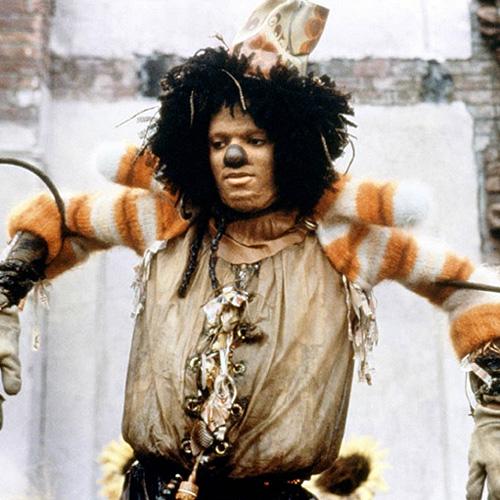
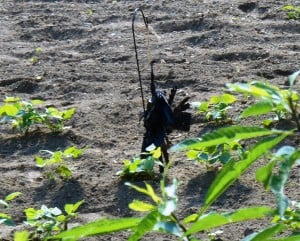

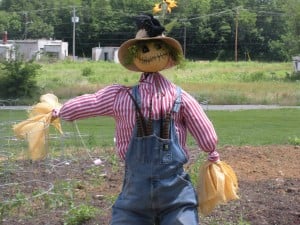
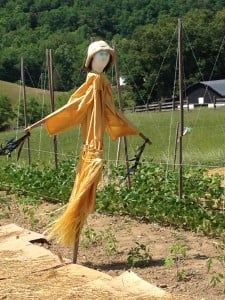
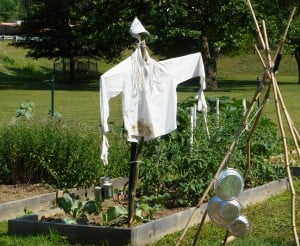

Leave A Comment